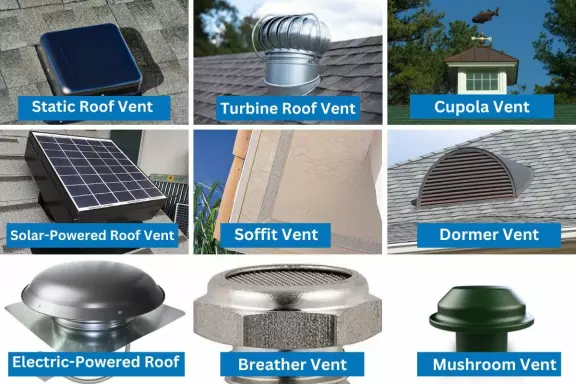Importance of Flat Roof Ventilation
Flat roofs, known for their modern and sleek appearance, are increasingly popular in contemporary architecture. However, they come with specific challenges, one of which is ventilation. Proper flat roof ventilation is crucial to maintain the integrity of the roof structure and ensure a comfortable living or working environment beneath it. In this blog post, we will explore the importance of flat roof ventilation and various methods to achieve effective ventilation.
Why Ventilate a Flat Roof?
Flat roofs are more susceptible to moisture and heat buildup than pitched roofs due to their design. Proper ventilation serves several essential purposes:
- Preventing Moisture Accumulation: Moisture can accumulate on the roof's surface due to rain, condensation, or ice damming. Without adequate
- ventilation, this moisture can lead to mold growth, rot, and structural damage.
- Temperature Control: Effective ventilation helps regulate the temperature in the living or working spaces below the flat roof. It prevents excessive heat buildup during the summer and minimizes heat loss during the winter.
- Prolonging Roof Lifespan: Adequate ventilation can extend the lifespan of your flat roof by reducing the risk of damage caused by moisture and temperature extremes.
Methods of Ventilation for Flat Roofs

There are several methods to achieve proper ventilation for flat roofs, each with its benefits and considerations:
- Mechanical Ventilation: This method involves the use of mechanical fans or vents to circulate air beneath the roof. It is particularly effective in controlling moisture and temperature, but it requires electricity to operate.
- Passive Ventilation: Passive ventilation relies on natural airflow to remove moisture and regulate temperature. It often involves the use of vents or openings strategically placed in the roof structure to encourage convection currents.
- Roof Vents: Installing roof vents, such as ridge vents or soffit vents, can help create a flow of air between the roof deck and the outside. Roof vents are commonly used in combination with other ventilation methods.
- Green Roofs: Green or "living" roofs consist of a layer of vegetation and a growing medium. They provide natural insulation and can help regulate temperature, reducing the need for mechanical ventilation.
- Cool Roof Coatings: Applying reflective or cool roof coatings can reduce heat absorption and minimize temperature fluctuations. These coatings are an excellent addition to a ventilation strategy.
Installation Considerations When implementing flat roof ventilation, consider the following installation tips:
- Consult a Professional: Seek the expertise of a roofing professional or architect with experience in flat roof ventilation to determine the best approach for your specific roof design and climate.
- Balance Inlets and Outlets: Ensure a balanced ratio of inlet and outlet vents to create effective airflow and prevent moisture buildup.
- Maintenance: Regularly inspect and maintain your flat roof's ventilation system to ensure it remains functional and free from blockages.
Conclusion
Proper flat roof ventilation is essential for preserving the integrity of your roof structure and creating a comfortable environment beneath it. Whether you opt for mechanical or passive methods, or a combination of both, investing in effective ventilation will pay off in terms of energy efficiency, roof longevity, and the overall well-being of your living or working space. Ensure your flat roof is well-ventilated to enjoy all the benefits it has to offer.
